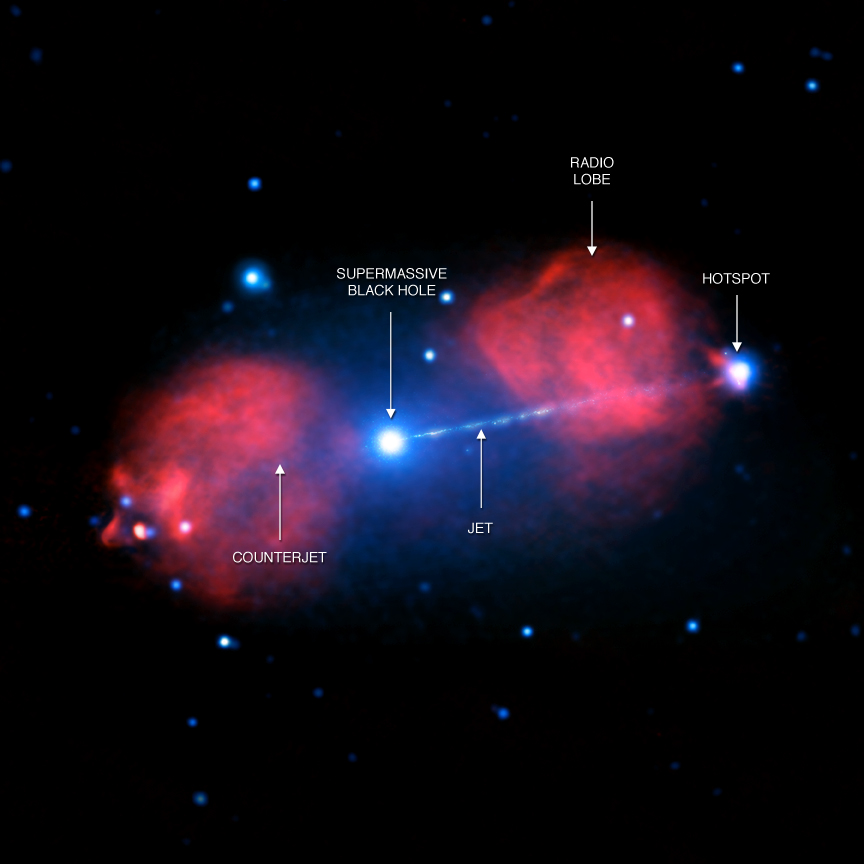
Pictor A is a galaxy located about 500 million light years from Earth. A supermassive black hole located at its center, causes material to fall towards the event horizon, releasing a huge amount of gravitational energy. This energy produces a jet of particles travelling at nearly the speed of light into intergalactic space.
Astronomers used data from NASA’s Chandra X-ray Observatory, along with radio data from the Australia Telescope Compact Array, over a period of more than 15 years, to study the galaxy. Combing observation in X-rays and radio waves, scientists try to understand the physics of these huge blasts.
The jet in Pictor A shows a continuous X-ray emission over a distance of 300,000 light years (the entire Milky Way is about 100,000 light years in diameter). Additionally to the prominent jet, another jet pointing in the opposite direction has been found. Astronomers, led by M. J. Hardcastle, recently reported, that this X-ray emission likely comes from synchrotron radiation, i.e. from electrons spiraling around magnetic field lines that are continuously re-accelerated as they move out along the jet. The exact mechanism of this phenomenon, though, is not fully understood. Another possible mechanism to produce the jets, is electrons that fly away from the black hole and collide with CMB photons, i.e. the Cosmic Microwave Background radiation that has been left over from the hot early phase of the Universe after the Big Bang. These collisions can boost the photon’s energy up into the X-ray band. Which mechanism is favorable depends on local conditions. The latter mechanism doesn’t seem plausible though, in the case of Pictor A. The brightness of the X-ray emitted from the jet and counterjet does not match what is expected in the process involving the CMB. Neverthess, high-resolution radio observations of jets are required to draw strong conclusions.
Source: Chandra
Publication: Hardcastle et al. 2016
